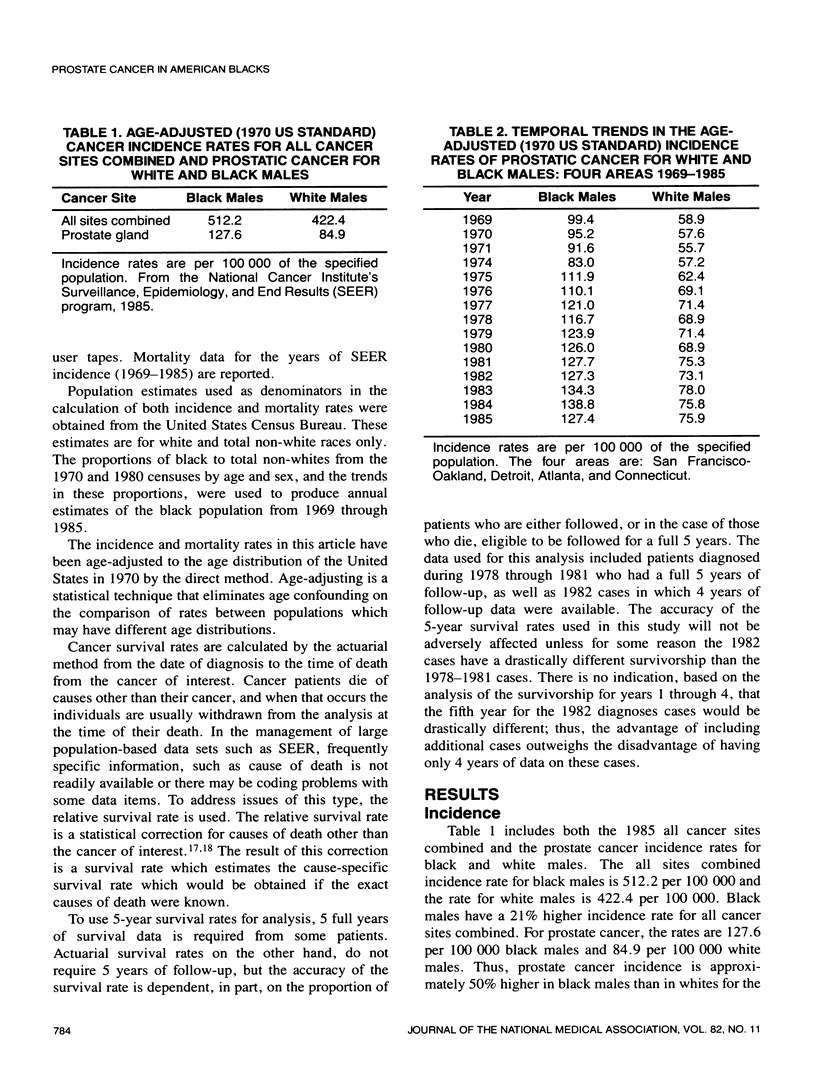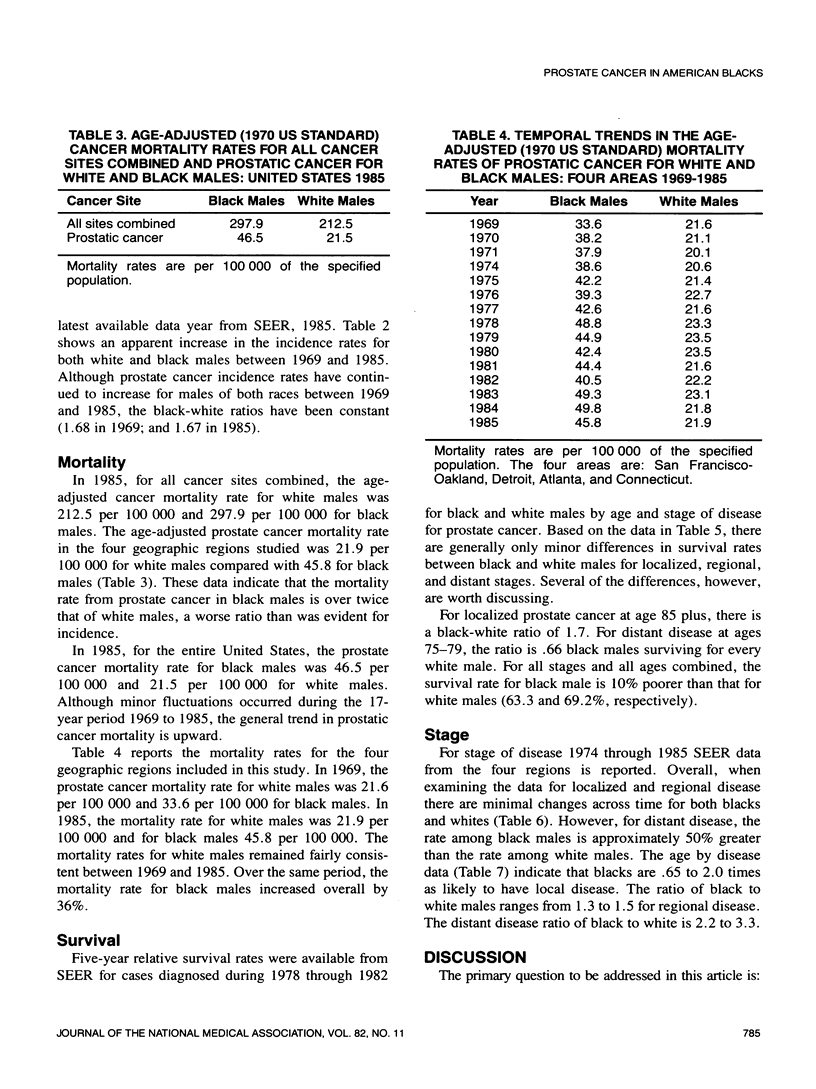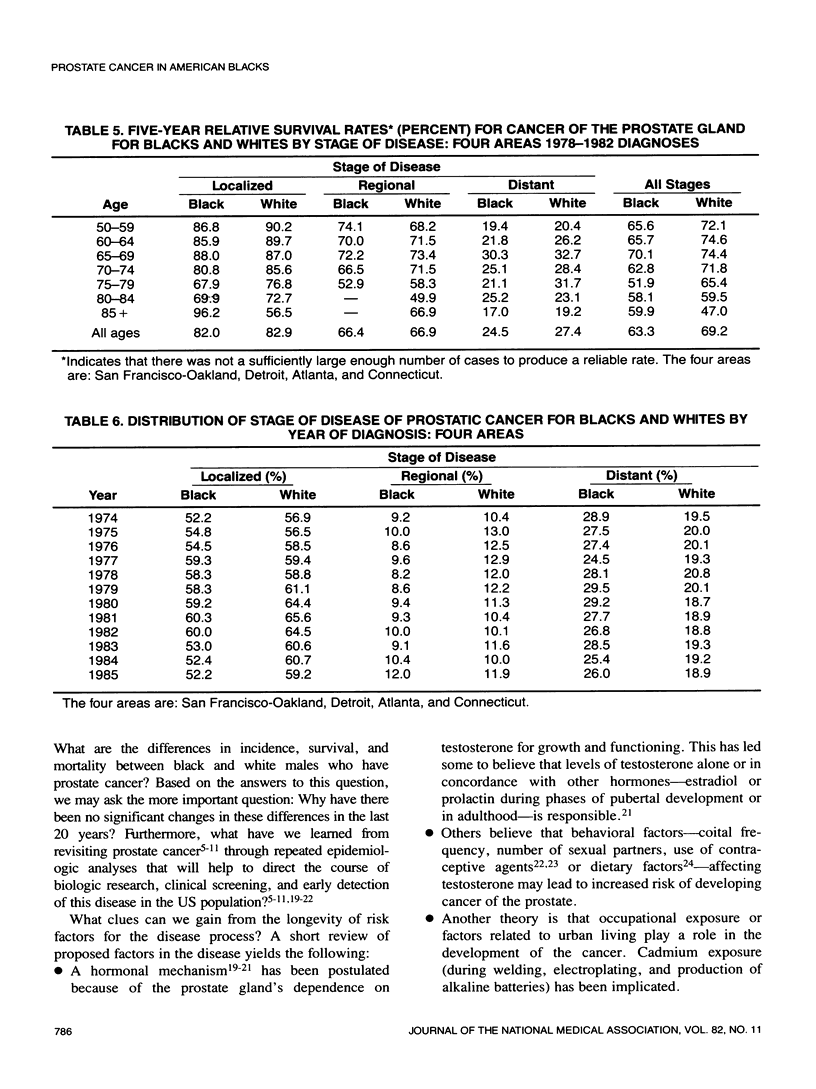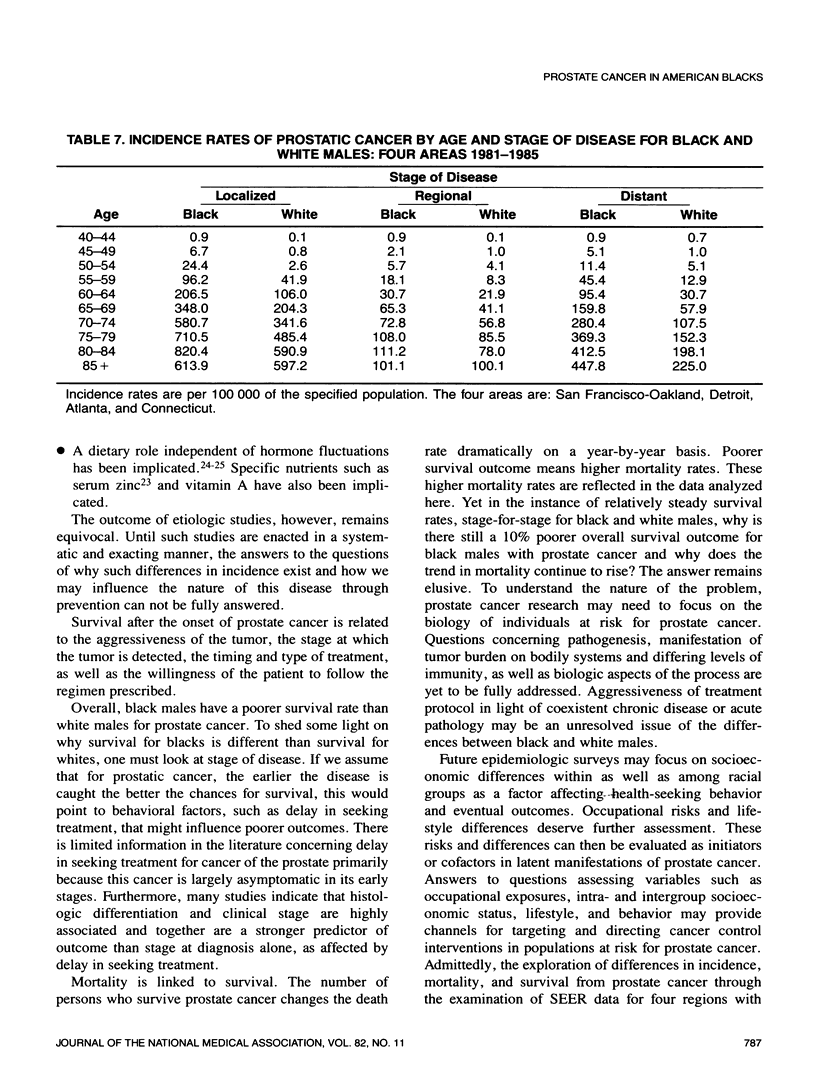Abstract
The National Cancer Institute's Surveillance, Epidemiology, and End Results (SEER) program is used to examine the most recent data available to draw inferences about black and white males in the United States with prostate cancer. Findings include a continuing rise in the incidence of prostate cancer which, as of 1985 SEER data, is 50% higher in the black male population than in white males. With the exception of minor fluctuations over the last 17 years, the mortality rate for black males demonstrates an upward trend. Combining all stages and ages, the survival rate for black males is 10% poorer than for white males. These data provide a glimpse into the problem of prostatic carcinoma in the United States today. To develop preventive strategies and cancer control interventions, a fuller understanding of the nature of the disease and its biologic course is necessary. Epidemiologic questions concerning socioeconomic status among and within racial groups, lifestyles, and behaviors that affect health seeking and diagnosis and treatment of prostatic cancer must be answered. By examining SEER data for prostatic cancer, we update the current status of this disease in North American blacks and infer possible directions for future epidemiologic surveys and cancer control intervention research.
Full text
PDF






Selected References
These references are in PubMed. This may not be the complete list of references from this article.
- Bang K. M., White J. E., Gause B. L., Leffall L. D., Jr Evaluation of recent trends in cancer mortality and incidence among blacks. Cancer. 1988 Mar 15;61(6):1255–1261. doi: 10.1002/1097-0142(19880315)61:6<1255::aid-cncr2820610634>3.0.co;2-7. [DOI] [PubMed] [Google Scholar]
- Guinan P. D., Wiggishoff C. C., Rotkin I. D., Chmiel J. S., Sylvester J., Cunningham M. P. Prostate cancer in Illinois. IMJ Ill Med J. 1984 Nov;166(5):341–345. [PubMed] [Google Scholar]
- Heshmat M. Y., Kaul L., Kovi J., Jackson M. A., Jackson A. G., Jones G. W., Edson M., Enterline J. P., Worrell R. G., Perry S. L. Nutrition and prostate cancer: a case-control study. Prostate. 1985;6(1):7–17. doi: 10.1002/pros.2990060103. [DOI] [PubMed] [Google Scholar]
- Hill P., Garbaczewski L., Walker A. R. Age, environmental factors and prostatic cancer. Med Hypotheses. 1984 May;14(1):29–39. doi: 10.1016/0306-9877(84)90060-4. [DOI] [PubMed] [Google Scholar]
- Hill P., Wynder E. L., Garnes H., Walker A. R. Environmental factors, hormone status, and prostatic cancer. Prev Med. 1980 Sep;9(5):657–666. doi: 10.1016/0091-7435(80)90037-7. [DOI] [PubMed] [Google Scholar]
- Krain L. S. Epidemiologic variables in prostatic cancer. Geriatrics. 1973 May;28(5):93–98. [PubMed] [Google Scholar]
- McWhorter W. P., Schatzkin A. G., Horm J. W., Brown C. C. Contribution of socioeconomic status to black/white differences in cancer incidence. Cancer. 1989 Mar 1;63(5):982–987. doi: 10.1002/1097-0142(19890301)63:5<982::aid-cncr2820630533>3.0.co;2-i. [DOI] [PubMed] [Google Scholar]
- Mettlin C., Natarajan N. Epidemiologic observations from the American College of Surgeons' survey on prostate cancer. Prostate. 1983;4(4):323–331. doi: 10.1002/pros.2990040402. [DOI] [PubMed] [Google Scholar]
- Wynder E. L., Laakso K., Sotarauta M., Rose D. P. Metabolic epidemiology of prostatic cancer. Prostate. 1984;5(1):47–53. doi: 10.1002/pros.2990050105. [DOI] [PubMed] [Google Scholar]


